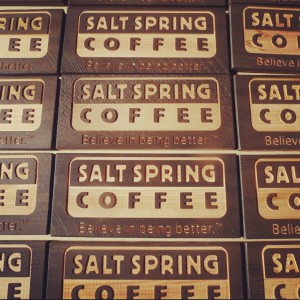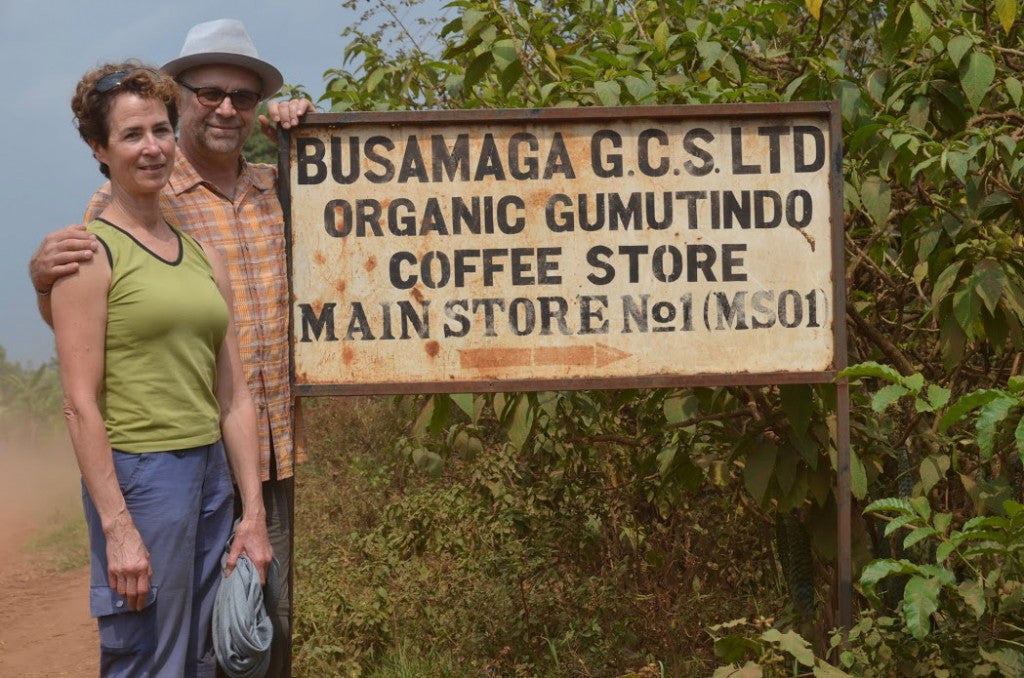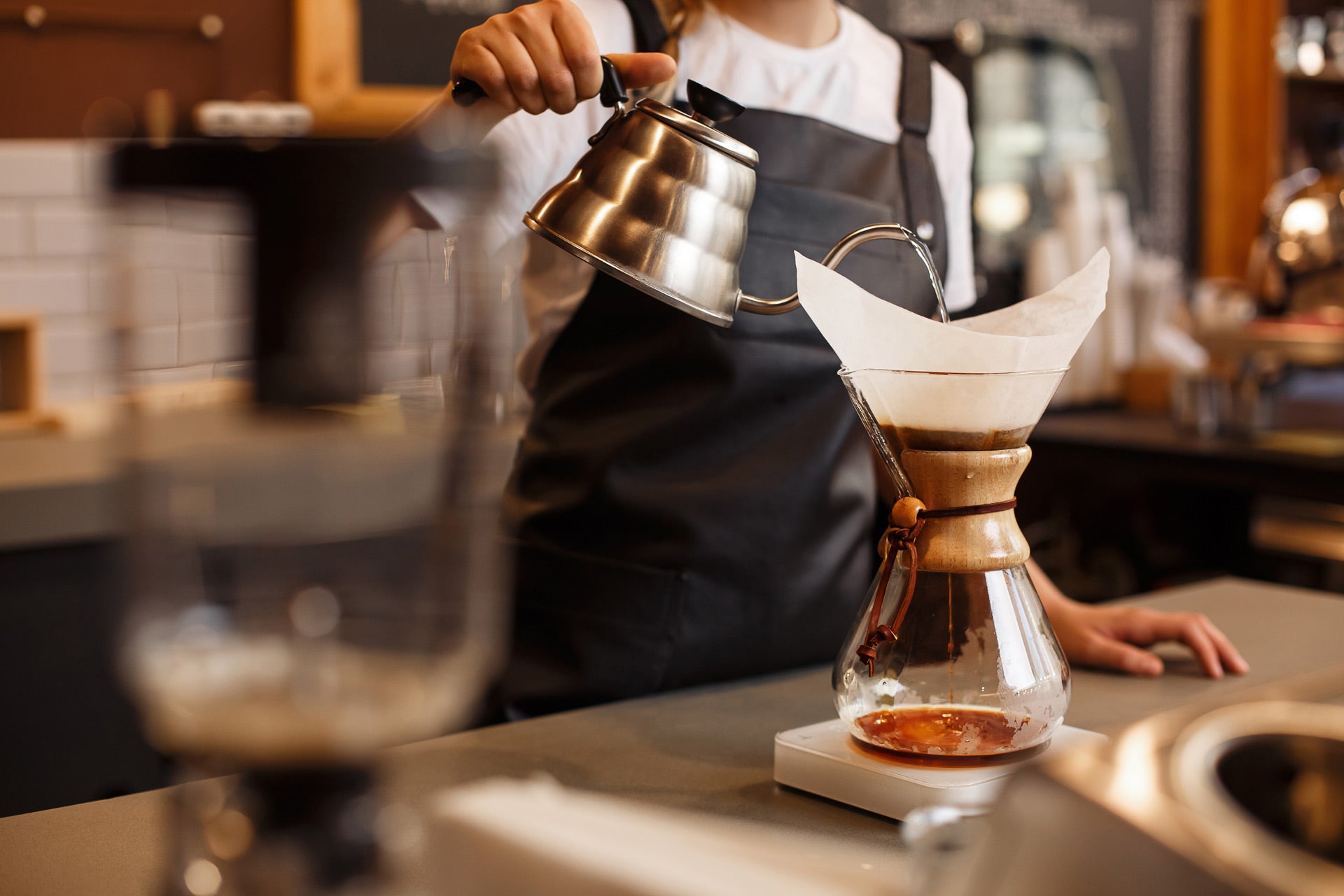The Art and Science of Roasting: An Insider’s Look
There’s a story behind every cup of Salt Spring Coffee. That story may begin at origin, where the beans are grown and harvested, but the roasting process is also a vital chapter.
Meet Nelson Teskey, Lead Roaster and dedicated member of the Salt Spring Coffee team. Nelson has mastered the roasting process over the 10 years that he has been with us, and anyone who meets him can instantly sense his enthusiasm and passion for coffee, along with his incredible expertise around the complexity of the roasting process. Nelson interacts seamlessly and effortlessly with the roaster and its various accessories, a result of years of experience with them.

Today he was roasting Pangoa beans from Peru for our blended coffees, and he took us through the entire process, from start to finish.

Green beans ready to be deposited into the auger, and then roasted.

The auger basket is covered by a metal mesh screen to collect all debris. From there, the green beans travel up the red auger to be collected in the loading bay. The loading bay is incredibly important, as it provides a holding area for the green beans while the actual roaster cools down to an appropriate temperature from the previous roast. Like pouring boiling hot water into a glass can cause it to shatter, the internal environment of the roaster has to be the perfect temperature (not too hot, and not too cold) or the quality of the beans will be affected.

Once the beans are dropped into the actual roaster, much of the moisture in the beans needs to evaporate before the sugars in the coffee can be developed. Here, the roaster acts like a convection oven, with an internal spinning action. The circulating hot air and even rotation ensures that heat isn’t applied directly to the beans, and that no bean is burnt as a result.
Throughout the roasting process, it is essential to maintain a steady, even temperature, as it prevents any burning or “baking out” of the beans’ flavours. The temperature of the environment within the roaster is monitored on the roaster itself, and is regulated by air control vents. In addition, the roasting profile of the coffee being roasted is monitored on an external program called cropster. This ensures that any given coffee is consistently roasted to its optimal point, every time.
As the beans continue to roast, the circulating beans are inspected. At the beginning of the roasting process, the beans have a light green colour and a grassy smell, and they turn to a deeper yellow and light brown colour, developing a sugary smell.

The aroma eventually becomes more toasty and nutty, and the beans begin to expand and crack. This “first crack” is a pivotal point in the roasting process, as this is the point where the beans become exothermic, aka they start generating their own heat. This is generally when the temperature reaches 385-390 degrees Celsius, at which point the roaster is turned off, and the beans continue to roast via their self-generated heat.

Once the beans have reached their desired roasting temperature (which could be after 1st or 2nd crack, depending on the roast level), they are splashed with cold water and released into the cooling tray.

A fan located at the bottom of the cooling tray pulls heat from the beans. The cooling process takes approximately 5-8 mins, depending on how dark roasted the beans are.

Beans are circulated in the cooling tray until they cool completely. Then, the beans are weighed and a Javalytics coffee roast analyzer device is used to assign a numeric value to the colour of a roast, which ensures consistency between each roast. Lastly, the coffee is brewed and quality control tested. Once it passes, it is ready to be blended.

Tasting the final product. Delicious!
The post The Art and Science of Roasting: An Insider’s Look appeared first on Salt Spring Coffee.


